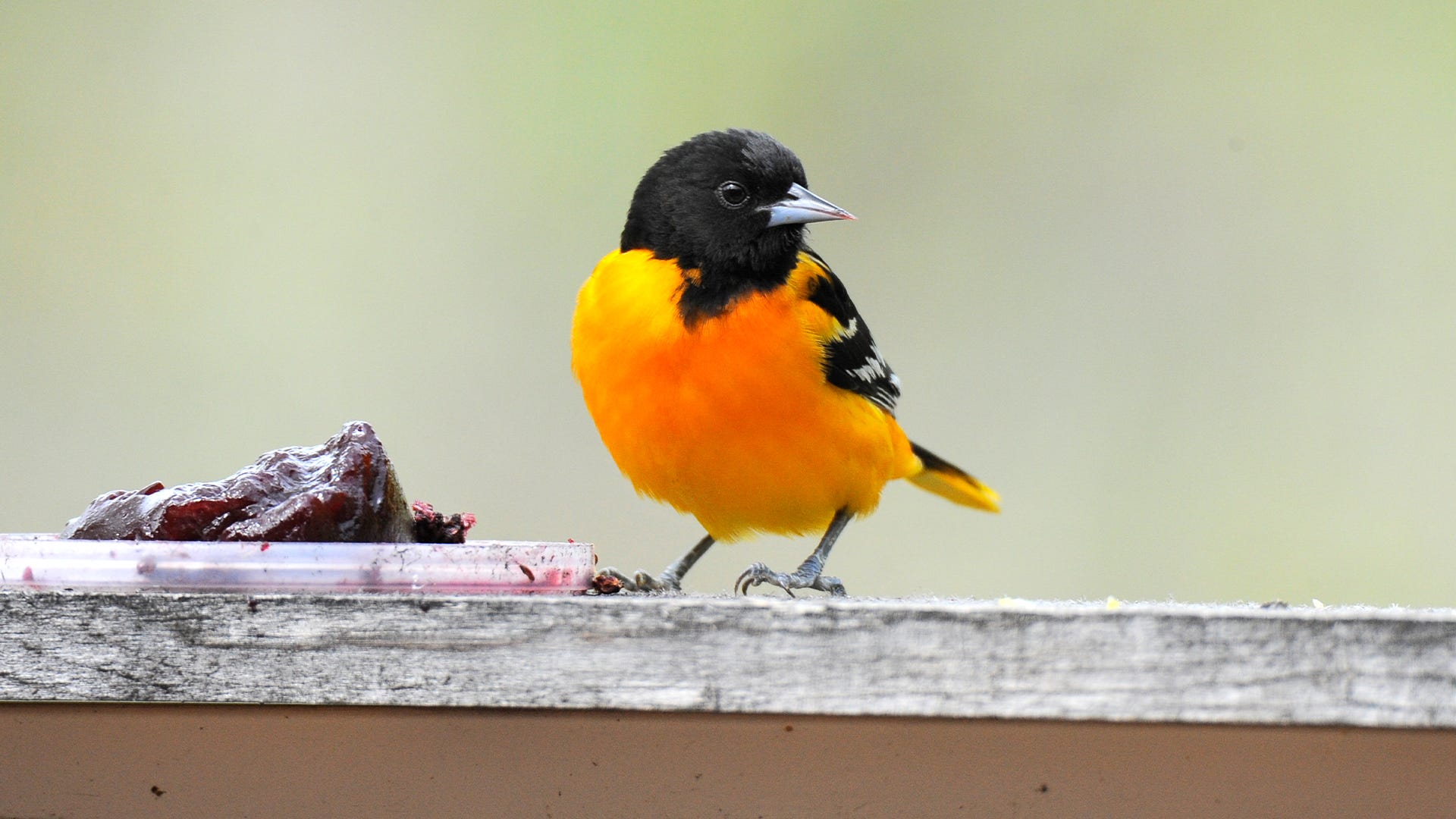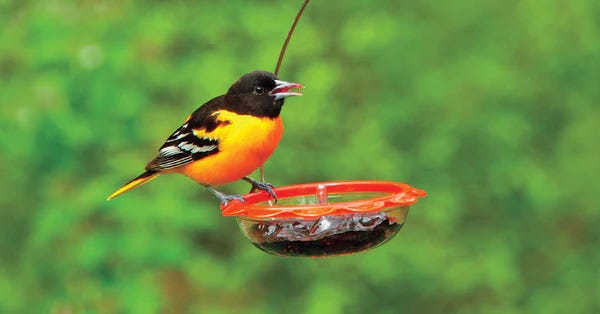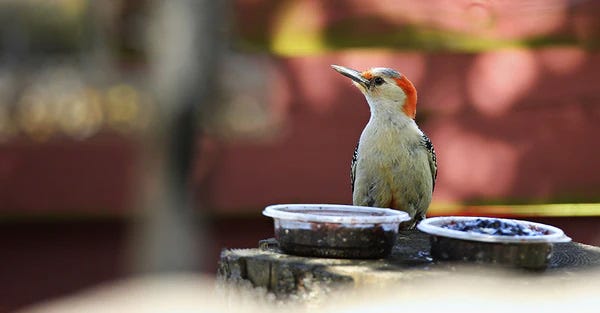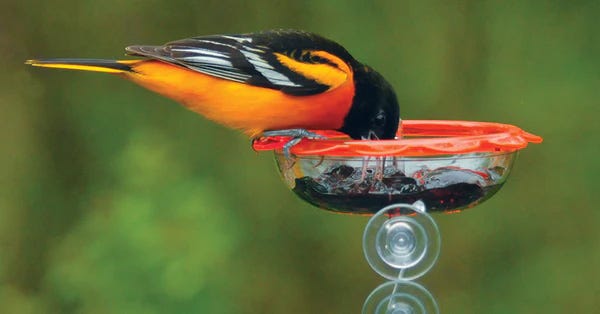
Humans aren't the only ones with a sweet tooth. It's long been known that birds love a sweet treat. When it comes to deciding between jam, jelly, or preserves, experts have found that jelly is the clear favorite among birds.
Why Feed Birds Jelly
Jellies from real fruit and fruit juice offer birds the best option for nutrition. The concentration of sugar and carbohydrates in jelly are excellent sources for energy for active birds. Feeding birds jelly is a way to supplement their diets, particularly during migration when birds expend more energy than during other life cycles. Jelly offers birds trace nutrients necessary to a balanced diet. Incidentally, nature always seems to know best so it's no surprise that birds that eat jelly are often migratory. Offering the birds in your backyard jelly during migration season is a great way to help birds refuel along their migratory routes.
See also: How to Attract Orioles
When to Offer Birds Jelly
As discussed above, offering birds jelly during migration is one of the most important reasons to make jelly available to your backyard birds. Offering jelly early in the season will ensure you attract early migrators. Jelly is a good source of nutrition during frigid times, as it helps birds reenergize quickly during the cold. One time of the year you should refrain from offering jelly is the summer months. The heat tends to accelerate the fermentation of jelly during the warm summer months. While you can still offer jelly during summer, keep in mind that less is best as hatchlings need high protein foods for growth. If you do choose to offer jelly, place it in a cool shady area to stay fresh. Keep an eye on birds consuming the jelly and remove what's left within a few hours to keep birds from consuming rancid jelly. Remember that the sugary sweetness in jelly will attract insects, especially bees, so keep jelly away from hummingbird feeders.
See also: Bee Safe: 6 Ways to Keep Bees Away From Your Hummingbird FeedersWhich Birds Eat Jelly
Jelly is especially attractive to orioles and woodpeckers. However, there are many species of birds that enjoy sampling a jelly treat such as:
- American Robins
- Black-Headed Grosbeak
- Brown Thrasher
- European Starling
- Cedar Waxwing
- Gray Catbird
- House Finch
- Northern Cardinal
- Scarlet & Western Tanager
According to ornithologists, birds who have even a slight frugivorous diet will be attracted to a jelly offering.
See also: A Guide to Feeding Birds Fruit
How to Offer Jelly to Birds
When it comes to preference, birds prefer dark colored jelly. Some dark jelly choices include blackberry, raspberry, currant, or the wildly popular grape jelly. Brand names do not concern birds, but if you're concerned about what to offer, you can buy commercially formulated jelly from wild bird store retailers. This jelly is created specifically for birds as there are no additives or preservatives like there are in the jelly in your refrigerator. The only jelly strictly off limits to birds are those that are sugar free. That's because they are made with sucralose and aspartame, sugar free sweeteners that defeat the purpose of offering sugar for energy. More importantly, birds can not digest sugar free sweeteners.
Like any sweet treat, it should be offered in moderation, at most a few tablespoons. It's also safest to place jelly in a small dish to prevent birds from stepping into a larger dish and getting stuck in the sticky sweetness. During migration, it's perfectly fine to offer a spoonful or two of jelly in the first half of the day. It can give migratory birds need a quick boost of energy to continue their journey. If you're unsure of what size dish to use, consider purchasing an oriole feeder with a small dish.

Some Precautions When Offering Birds Jelly
Just as ice cream is a popular summertime treat for the kids, jelly is a popular treat for birds during summer. Like any treat, offer jelly to your backyard birds in moderation. However, it's important to determine if it's time to stop offering jelly to birds. Keep these tips in mind:
- If birds are not responding to your offering and it's going rancid, or, worse yet, attracting wildlife such as raccoons, rats, or mice, it's time to remove the jelly. These animals can be a threat to birds.
- Stop feeding jelly if a particular bird is monopolizing your jelly dish to the point they no longer seek out other sources of nutrition. Surprisingly, this can be a sign of a bird's sugar addiction. This is unhealthy as it keeps them from getting other vital nutrients in their diet.
- If birds are managing to get the sticky treat on their plumage, it can cause them to be damaged. This in turn can cause flight or mobility difficulties leaving the bird vulnerable to predators.
When done properly and with precautions in mind, feeding your backyard birds jelly will provide you an opportunity to attract birds you may otherwise not see at your feeders. It's a great way to offer migratory birds an energy boosting source while you get to check off a few new birds on your list.
See also: How to Keep Mice and Rats Away from Bird Feeders






